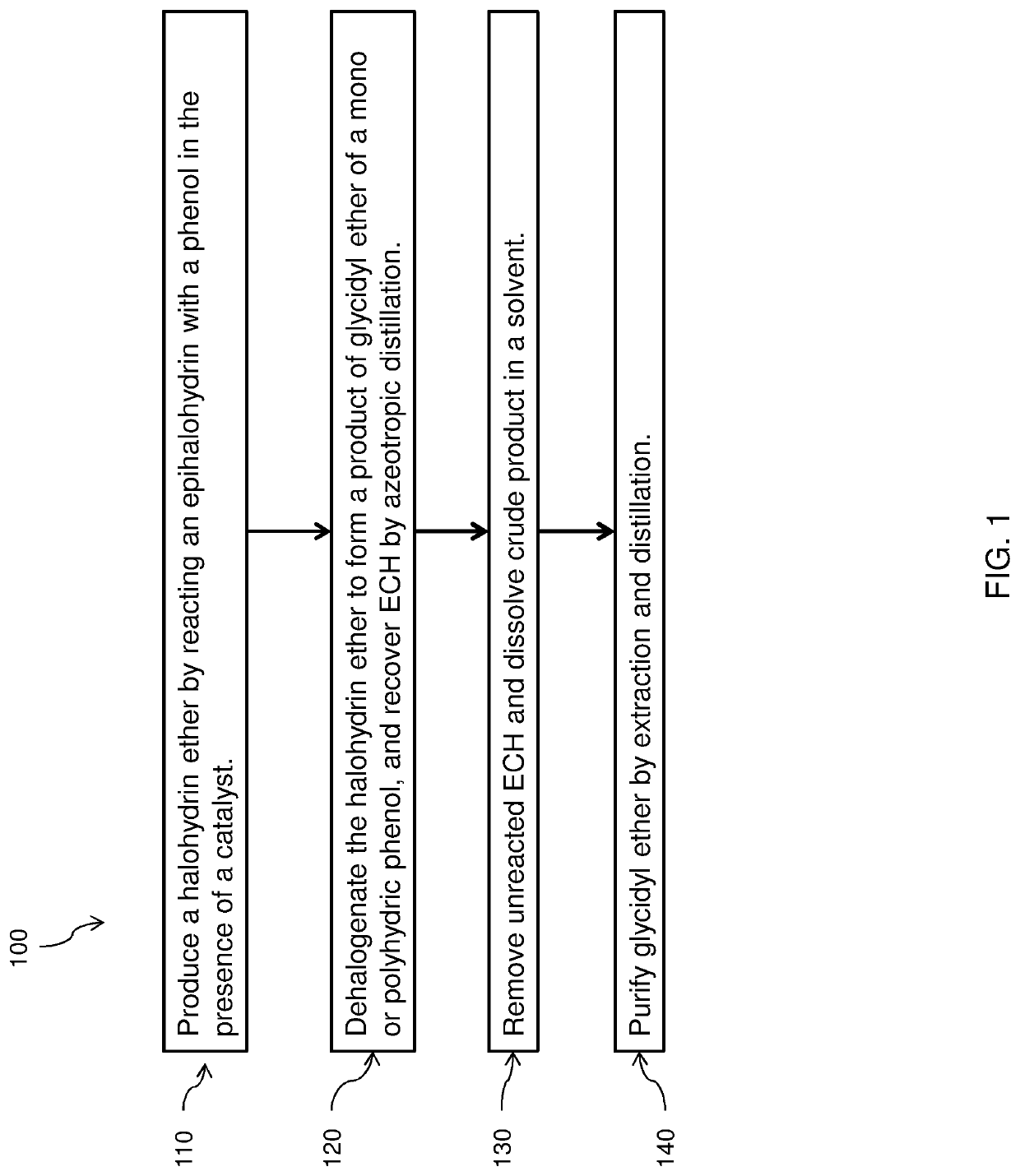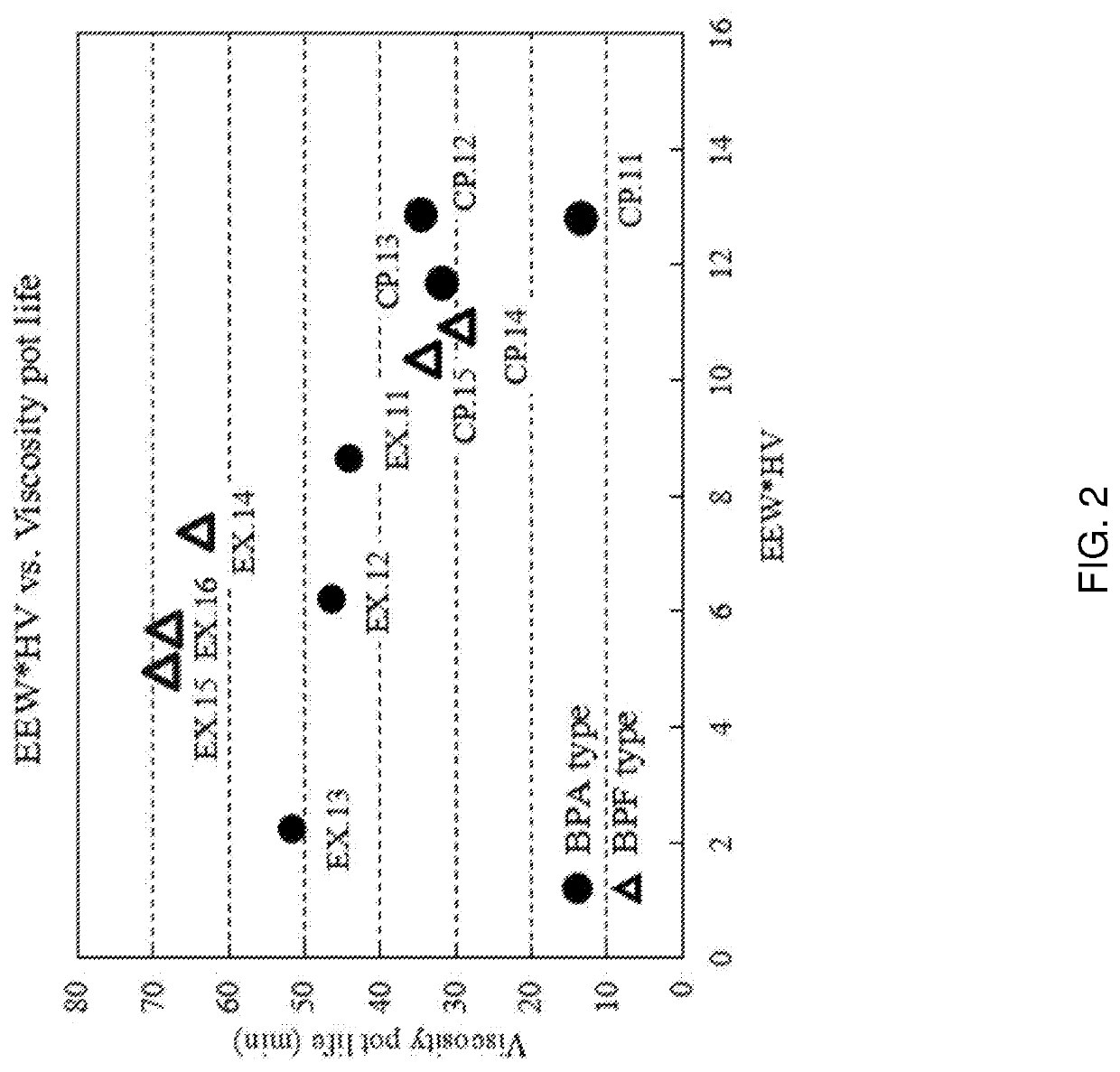Product of glycidyl ether of a mono or polyhydric phenol
- Summary
- Abstract
- Description
- Claims
- Application Information
AI Technical Summary
Benefits of technology
Problems solved by technology
Method used
Image
Examples
examples
[0059]The following Examples are provided primarily for the purpose of elucidating the benefits and advantages achieved by aspects of the invention.
example 1
[0061]Glycidyl ether of BPA was produced using a 3 L-4-neck reactor that was equipped with a device for controlling and displaying the temperature and pressure as well as a device for condensing a co-distillation mixture of water and epichlorohydrin (also referenced herein as “ECH”), and separating the co-distillation mixture into an organic phase and an aqueous phase. Specifically, 300 grams (hereafter “g”) of BPA and 900 g of ECH were added in the 3 L-4-neck reactor with 2.7 g of benzyltriethylammonium chloride (9,000 ppm to BPA), which acted as a catalyst for the coupling step. The ratio of the ECH to the OH groups from BPA was 3.7 ([ECH] / [OH]=3.7). The purity of the epichlorohydrin was over 99 wt. %, and the contents of glycidol and water in epichlorohydrin were 0.31 wt. % and 0.15 wt. % respectively. The mixture was stirred to form a homogeneous solution under atmospheric pressure at 40° C. and the temperature was gradually raised from 40° C. to 75° C. over 50 hours, then the t...
example 2
[0064]Glycidyl ether of BPA was synthesized using the same procedure described in Example 1, except that: the amount of epichlorohydrin employed was 1,120 g; the ratio of the ECH to the OH groups from BPA was 4.61 ([ECH] / [OH]=4.61); the contents of glycidol and water in epichlorohydrin were 0.44 wt. % and 0.04 wt. % respectively, and the amount of benzyltriethylammonium chloride was 1.35 g (4,500 ppm to BPA).
PUM
| Property | Measurement | Unit |
|---|---|---|
| Temperature | aaaaa | aaaaa |
| Temperature | aaaaa | aaaaa |
| Fraction | aaaaa | aaaaa |
Abstract
Description
Claims
Application Information
 Login to View More
Login to View More - R&D
- Intellectual Property
- Life Sciences
- Materials
- Tech Scout
- Unparalleled Data Quality
- Higher Quality Content
- 60% Fewer Hallucinations
Browse by: Latest US Patents, China's latest patents, Technical Efficacy Thesaurus, Application Domain, Technology Topic, Popular Technical Reports.
© 2025 PatSnap. All rights reserved.Legal|Privacy policy|Modern Slavery Act Transparency Statement|Sitemap|About US| Contact US: help@patsnap.com



